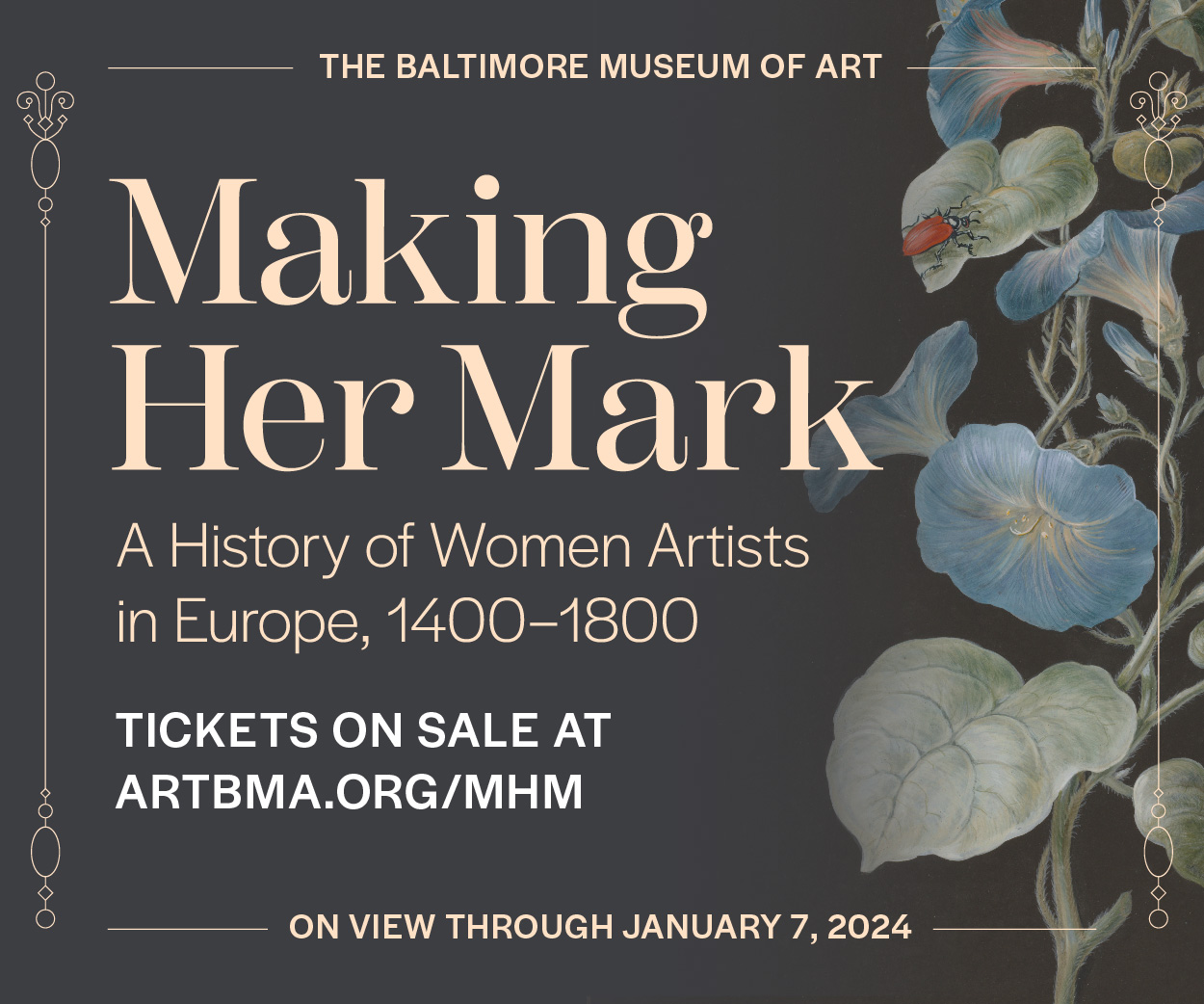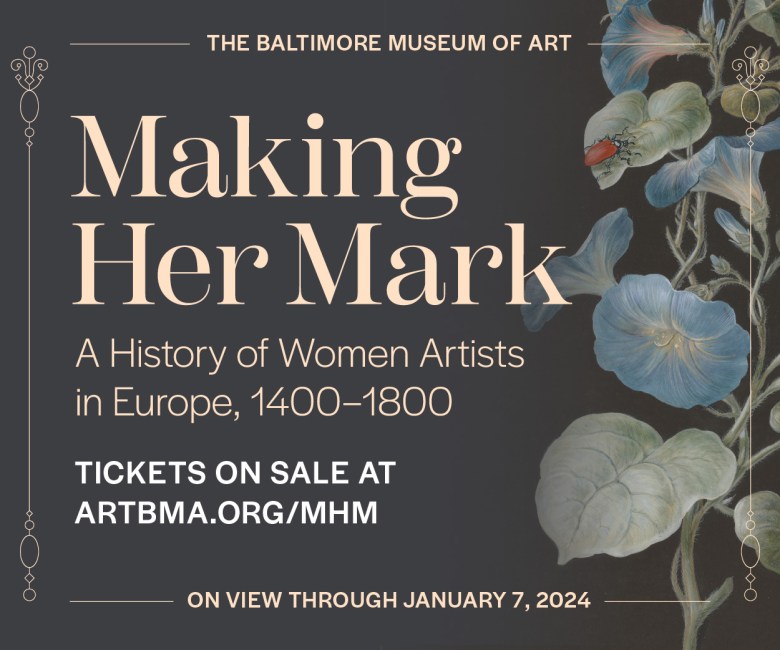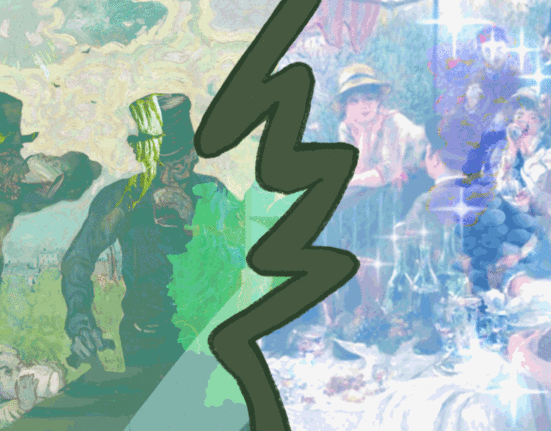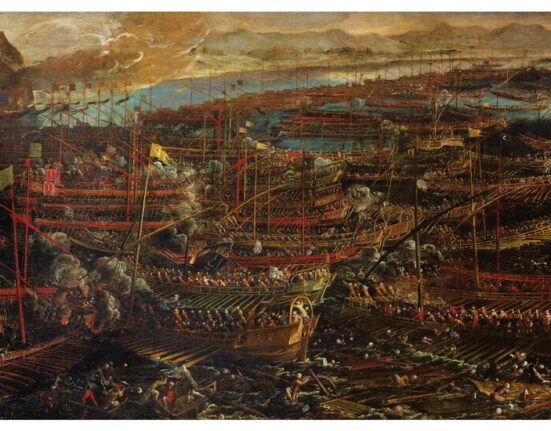For centuries, art historians have accepted the characterization of European women artists from the pre-modern era as rare and comparatively less talented than their male counterparts. This assumption is now being turned on its head with a groundbreaking exhibition that presents a more accurate and expansive presentation of women’s creative accomplishments: Making Her Mark: A History of Women Artists in Europe, 1400-1800.
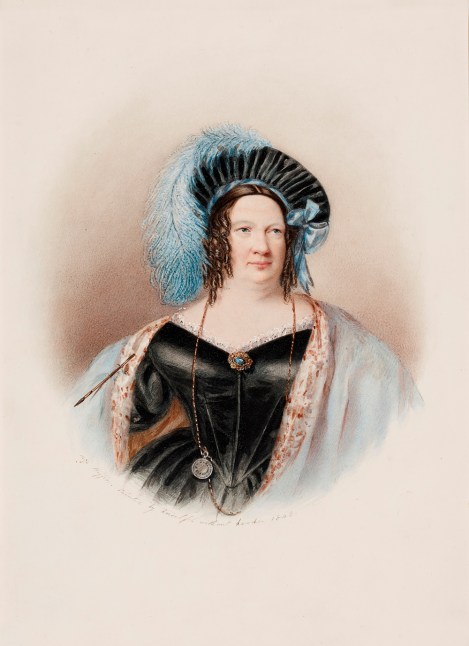
Sarah Biffin (British, 1784–1850) was born with phocomelia, or as described on her baptism record, “born without arms and legs.” She taught herself to use her mouth to write, sew, and paint professionally, and promoted her talents and her physical condition on circulated posters and flyers, presenting herself not only as an accomplished artist but an adept businesswoman.
From royal portraits and devotional sculptures to embroidered objects, tapestries, costumes, wax sculptures, metalwork, ceramics, graphic arts, furniture, and more, Making Her Mark features more than 200 works of diverse media and scale from the 15th to 18th centuries that reflect the multifaceted and often overlooked ways that women contributed to the visual arts of Europe.
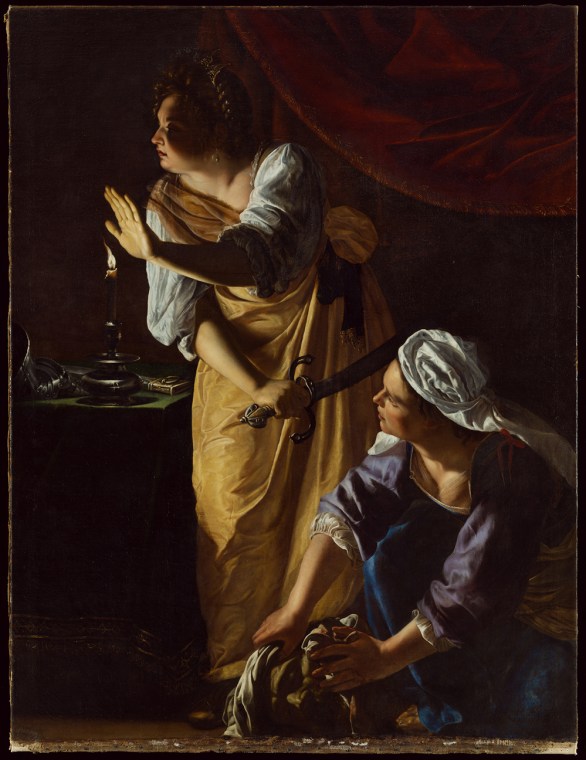
One of the most famous female painters of the 17th century, Artemisia Gentileschi (Italian, 1593–after 1654) was known for her ability to convey intense drama through use of shadow, color, and light. In her portrayal of the biblical story of the Jewish heroine Judith beheading Holofernes, deep shadows cast by a single candle’s flame obscure the violent beheading.
A team of women curators led by Andaleeb Badiee Banta, Senior Curator and Department Head of Prints, Drawings & Photographs at the Baltimore Museum of Art, and Alexa Greist, Curator & R. Fraser Elliott Chair of Prints and Drawings at the Art Gallery of Ontario, spent four years researching collections throughout the United States, Canada, and Europe, studying an astonishing number of works by women artists.

Maria Sibylla Merian (German, 1647–1717) was a leading botanical artist who innovatively presented insects situated within their habitats and the broader ecological dynamic. Through narrative vignettes of insect and plant life as an intertwined phenomenon, she constructed a lifecycle image that became a standard in scientific illustration and shaped entomology.
Named a “must-see” exhibition by Vogue and a “sure-to-be-historic show” by the New York Times, visit artbma.org/mhm for tickets.

